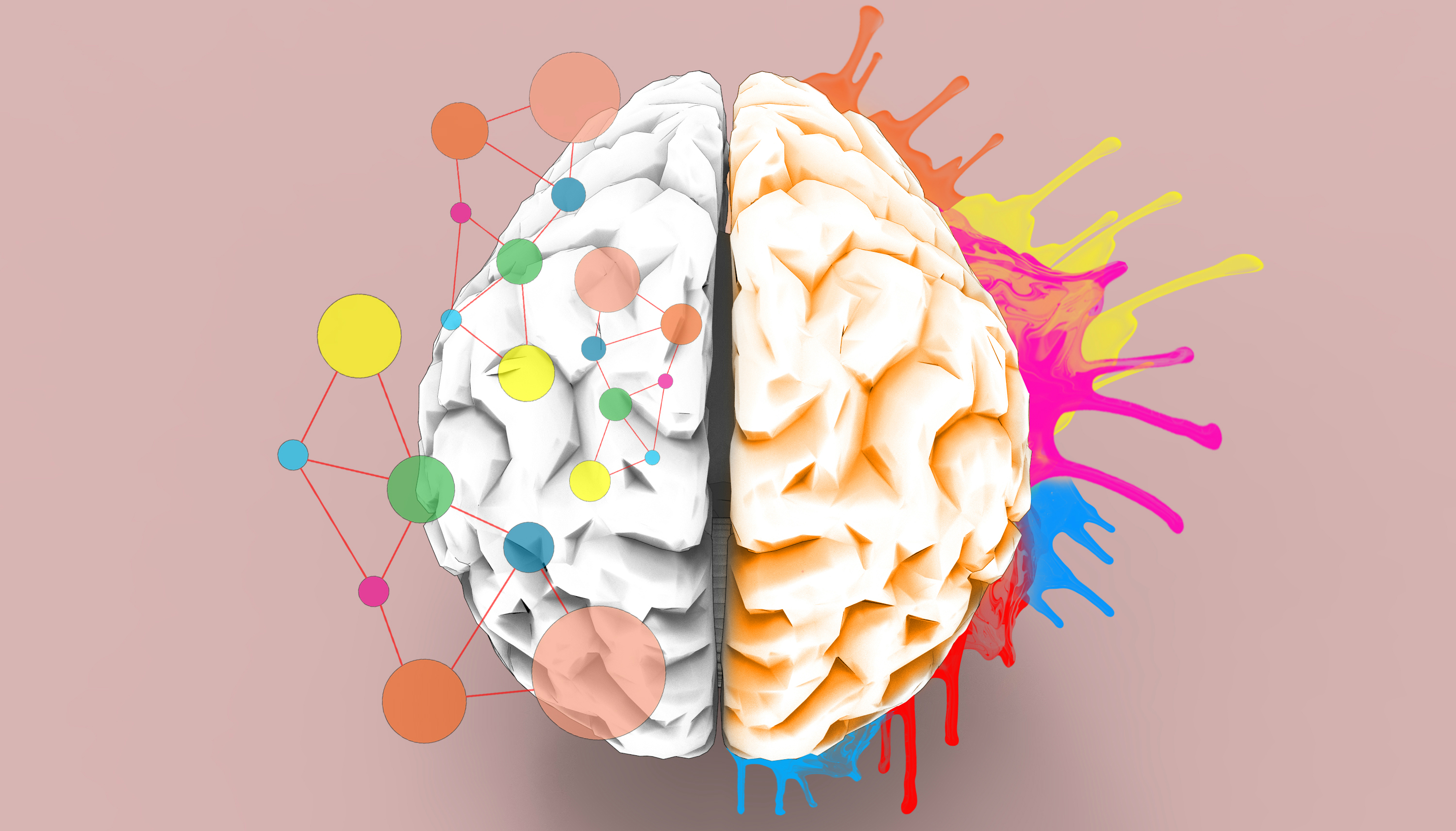Neuroscientists are revealing the many different types of dreams. One type, called lucid dreaming, is a feeling that a dream scenario is real-life.
That means you’re dreaming but you know it. You could also call it self-realization dreaming.
Research suggests two of the most common types of lucid dreams are trying to fly, and having sex. If you’ve ever had either of these dreams, and been aware that you’re actually not flying (or having sex), then you could be a lucid dreamer.
So what is lucid dreaming?
In this article we’ll explore the different types of dreams and the techniques for lucid dreaming.
What happens when you lucid dream?
Lucid dreaming is a dream where you are in a scenario that you KNOW is a dream. People report many different experiences from lucid dreaming.
Scientists are discovering new results on lucid dreaming.
One study surveyed 570 people who said they’ve experienced lucid dreaming to find the most common lucid dreams. Researchers asked whether dreamers decided what they were going to do in their dream.
Results show a variety of types of lucid dreams.
These include:
- Problem-solving dreams
- Dreams of experiences not possible in real life
- Near-death experience dreams
- Dreams of solutions to reoccurring nightmares
Lucid dreaming also could be helpful in treating psychological problems such as frequent nightmares or PTSD. A previous survey of about 300 lucid dreamers found that the majority of lucid dreamers used their dreams to have fun and to change nightmares into pleasant dreams. About 30 percent of lucid dreamers also reported using lucid dreams for problem solving and creativity.
What are the causes of dreaming?
To this day, we don’t fully understand why we dream. Because some aspects of the brain work similarly when asleep and when awake, many believe that dreams aren’t exactly random. For example, it’s been observed that when we’re asleep, our brains capture information from our immediate environment and find ways to incorporate that into whatever dream we’re having.
Some also theorize that dreams pull from our memories as well, using them as a sort of foundation upon which the dream is built.
The different types of dreams
Lucid dreaming is just one type of dream.
Dreaming has only recently become a full area of study for scientists. There are many classifications for dreaming. Some say that there are eight or nine types of dreams, while others are less specific.
However, many experts agree that in general, dreams can be classified into three types.
- Normal dreams: During these kinds of dreams, we are not aware that we’re dreaming. We see, hear, feel, and experience things, and think that we’re actually moving in our reality.
- Nightmares: Nightmares are like normal dreams, except they evoke severely negative emotions and are regarded as extremely distressing and unpleasant. They happen when the amygdala, the part of the brain associated with anger and fear, kicks into overdrive. Understandably, waking up from a nightmare is often accompanied by a tidal wave of relief.
- Lucid dreaming: As there’s the added element of the dreamer being aware that they’re actually in a dream, lucid dreaming tends to involve a more complex thought process, and can be quite detailed. Furthermore, some lucid dreamers have attested to the fact that they retain part of the dream in their memory upon waking up. In fact, for some, these memories feel so real that they have slight difficulty accepting that they didn’t happen in the real world.
The question now is this: How do we enter the state of lucid dreaming?
Lucid Dreaming & Stages of Sleep

Lucid dreaming requires the brain to entire the full cycles and stages of sleep. Source
To understand how to lucid dream we need to know the stages of sleep:
There are typically four stages of sleep, each lasting between 5 to 15 minutes. An entire sleep cycle — all of these stages together, repeated a couple of times — lasts between 90 to 110 minutes.
- Stage 1: This is the beginning of non-rapid eye movement (NREM) sleep. This also marks the start of light sleeping. At this stage, you can easily be jolted awake by the slightest disturbance (such as a loud sound in your environment or a few light taps on your shoulder). At this stage, your brain activity starts to slow as your muscles relax.
- Stage 2: At this stage, you’re not as easy to wake, but you’re not quite in dream world yet. Here, your heart rate begins to slow, as your body temperature goes down. Your brain waves also begin to decelerate, save for brief, rapid activity known as sleep spindles and brain waves called K-complexes (which are said to suppress cortisol arousal and help memory consolidation while sleeping).
- Stage 3: Also known as deep NREM sleep, this is the stage where you become less likely to be awoken by simple physical disturbances or arousals. This is said to be the most restorative stage of sleep, and is also where sleepwalking or sleep talking take place.
- REM Sleep: This is where most dreaming occurs. Brain waves are more active here than in the previous two stages, and it’s easier to wake you up during this stage.
Rapid-Eye Movement (REM) is the state in which the brain functions as if it were awake, but while the eyes flutter and move at an accelerated rate. It originates from the pons (the base of the brain), traveling all the way to the thalamus and the cortex. According to experts, this occurs in 90-minute cycles, establishing neural pathways and basically “writing” memories.
Additionally, the body produces cortisol, the stress hormone in charge of maintaining your immune system and blood glucose levels, during this REM state. Levels of dopamine, the hormone connected with pleasure, rise as well, facilitating the continuation of the dream state.
Brain Waves and Dreams
Brainwaves are rhythmic electrical pulses of neural activity in the brain. They signal how neurons communicate with one another. They’re categorized based on their bandwidths (measured in Hertz) in order to determine their function: the slower brainwaves are larger, while the faster brainwaves are a bit more subtle.
Our brainwaves also adapt based on our current circumstances. For instance, we experience slower brainwaves when we’re tired and not at peak operating efficiency; on the other hand, when we’re at heightened alertness, higher-frequency brainwaves become more prominent.
There are different types of brainwaves:
- Infra-low waves (<0.5 Hz): While they are regarded as the basic cortical rhythms in our brain, we know extremely little about them, due to the fact that they are quite difficult to detect and measure.
- Delta waves (0.5 to 3 Hz): These are the slowest and loudest brainwaves, detected in NREM sleep and deep meditation.
- Theta waves (3 to 8 Hz): Typically detected during deep meditation and sleep, theta waves are said to be the “gateway” to memory, intuition, and learning. They tend to occur during that brief, fleeting point between being awake and falling asleep.
- Alpha waves (8 to 12 Hz): Dominant during the brain’s resting period, alpha brainwaves play an important role in alertness, calmness, learning, and mental coordination.
- Beta waves (12 to 38 Hz): These are the brain waves observed when we’re awake. These register when we are alert, thinking, making decisions, or generally just being aware of our surroundings.
- Gamma waves (38 to 42 Hz): The fastest of brainwaves, gamma waves were initially regarded as nothing more than “spare brain noise.” Subsequent research, however, has revealed that gamma waves are actually involved in processing information from different areas of the brain simultaneously. They were also observed to be especially active during the states of the “higher virtues” such as altruism and love. Though the origin of gamma waves remains unknown, experts say that they actually play a key role in modulating consciousness and perception.
Which Brainwaves Achieve Lucid Dreaming?
Research shows certain brainwaves are associated with dream types.
- Gamma Waves
In 2009, a team of lucid dream researchers from the Neurological Laboratory in Germany detected gamma waves at 40 Hz in lucid dreamers.
They were looking into how the brain’s physiology changes during lucid dreaming, on the premise that lucidity is a “dissociated state” somewhere between dreaming and the state of being awake.
They noted that the effect was most apparent in the frontal and fronto-lateral areas of the brain. Incidentally, these are the areas of the brain where higher awareness and linguistic thought are believed to be centered. Since lucid dreaming can be interpreted as a person’s capacity to take control of their own dreams, this does make sense.
- Theta brainwaves
Theta brain waves are best described as a state of true relaxation. These are the brain waves a person will experience when they’re in the REM state of sleep, or they are deep in hypnosis. They help you achieve a state of mindfulness, which may assist lucid dreaming.
Ultimately, as you progress through the sleep stages and achieve a relaxed state, you move closer towards the state of lucid dreaming. Being in control of what happens in your dream — essentially, creating your preferred reality in your dream world — requires access to your memories. Hence, that’s where the theta brainwaves play a role.
How Sound Can Control Brainwaves: Binaural beats
Scientists have noticed that brainwaves can be affected or altered by exposure to soundwaves (otherwise known as brainwave entrainment, or binaural beats). They believe that the soundwaves create brainwave shifts that result in slower frequencies (and thus, deeper states of relaxation).
A recently conducted study with 19 participants revealed that exposure to binaural beats had a noticeable impact on three key hormones for sleep.
- Sixty-eight percent of the participants registered an increase in DHEA, a critical hormone for immunity and disease protection that suppresses cortisol.
- Meanwhile, 73 percent of the participants had higher levels of melatonin, the sleep-promoting hormone, post-binaural exposure.
- Last but not least, 70 percent of the participants registered reduced levels of cortisol after binaural beat exposure.
Additionally, a separate study from 2017 revealed that a combination of binaural beats and visual stimulation helped in reducing patients’ perception of acute pain. Other studies have revealed that they affect chronic pain perception as well. And of course, the less pain you feel, the easier it would be for you to fall asleep.
How to Control Your Dreams
One study looked at different groups to achieve lucid dreaming.
Three techniques were tested among 169 participants divided into three groups.
- The first group was assigned to do reality testing — they had to go through their day figuring out whether they were asleep or awake.
- The second group was assigned to do the WBTB (wake back to bed) technique — they slept for 5 to 6 hours, stayed awake for 10 minutes up to an hour, and then went back to sleep.
- The third group was instructed to try MILD (mnemonic induction of lucid dreams). They set their minds to entering the lucid dreaming state by repeating a mantra before sleeping.
The third group proved to be the most successful. Approximately 17.4 percent of the time, the technique worked.
The chances of success increased to almost 50 percent when participants dozed off within the first 5 minutes.
Are there Dangers of Lucid Dreaming?
However, lucid dreaming isn’t without its risks. Here are some reported side effects of lucid dreaming.
- Sleep paralysis. When you’re in a state between dreaming and waking, you may be unable to move, despite experiencing the visions in your dream. This experience can be terrifying but is not really that common.
- Realistic experiences. The lucid dream may feel so realistic that it’s nearly indistinguishable from reality. While it’s bound to stop when you wake up–and you certainly won’t sustain any physical injuries you experienced in your dream–it doesn’t mean that you won’t be affected by any negative emotions that you felt while in the dream state.
- Dream claustrophobia. There’s also a chance that the lucid dream will be so vivid that you’ll feel that you can’t awaken from it or control it. Fortunately, like the other two, this stops when you wake up.
In essence, think of lucid dreaming as an immersive and highly engrossing video game, with all the perks and pitfalls that come with such an experience.
6 Ways to Control Lucid Dreaming
With the balance of evidence, and much that we don’t know about lucid dreaming, here are 5 ways to attempt to access lucid dreaming.
- Practice mindfulness daily. These promote higher frequency brainwaves that may give access to lucid dreaming.
- Set an intention to dream about a particular topic that is important to you.
- Practice meditative breathing techniques 30 minutes before bed. Alternative nostril breathing may help to relax the brain and balance right and left-hand sides of the brain.
- Repeat a mantra associated with your dream. For example “I want to face my fear of heights”.
- Take a Galantamine supplement. A natural substance found in flowers such as Golden Spider Lily. It has been used in ancient Chinese culture for memory enhancement and is even a prescribed medication for Alzheimer’s disease and dementia.
- Deep breathing before and as you sleep will help the brain progress through sleep cycles adequate for lucid dreaming.
Conclusion
Today we are on the brink on understanding the phenomenon of lucid dreaming. Achieving advanced states of awareness during sleep could prove to be a remedy for sleep disorders, PTSD, or to help people achieve higher states of consciousness.
Have you ever experienced knowing that you were in a dream? Would you like to be able to enter the lucid dreaming state at will? Leave your thoughts in the comments section below.
Further reading:
- https://www.psychologytoday.com/us/blog/the-superhuman-mind/201212/lucid-dreaming-and-self-realization
- https://brainworksneurotherapy.com/what-are-brainwaves
- https://www.medicalnewstoday.com/articles/323077.php
- https://www.frontiersin.org/articles/10.3389/fnhum.2013.00836/full
- https://psycnet.apa.org/doiLanding?doi=10.1037%2Fdrm0000059
- http://www.end-your-sleep-deprivation.com/types-of-dreams.html
- https://www.ncbi.nlm.nih.gov/pubmed/19750924
- https://www.ncbi.nlm.nih.gov/pubmed/27807916
- https://www.ncbi.nlm.nih.gov/pubmed/26773319
- https://www.medicalnewstoday.com/articles/320019.php


 Lucid dreaming may be a technique by which you can solve everyday problems, in your sleep.
Lucid dreaming may be a technique by which you can solve everyday problems, in your sleep.






















